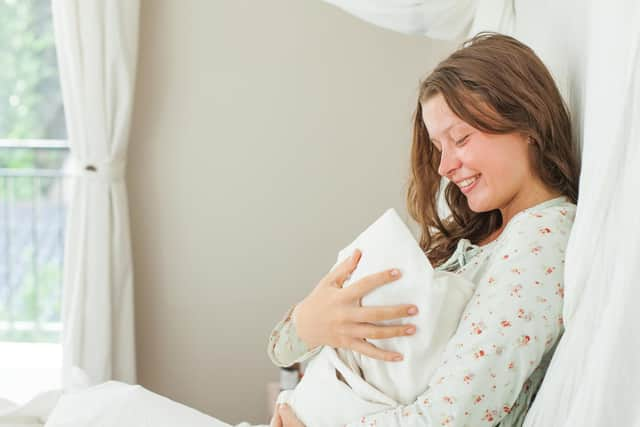More births with general anaesthesia in Wigan’s hospitals
and live on Freeview channel 276
Research from six hospitals in the North West has been published in Anaesthesia, a journal of the Association of Anaesthetists, which shows the overall proportion of deliveries using general anaesthesia roughly halved, from 7.7 per cent to 3.7 per cent.
Wrightington, Wigan and Leigh Teaching Hospitals NHS Foundation Trust (WWL) was the only hospital where there was an increase, from 5.6 per cent to 6.2 per cent.
Advertisement
Hide AdAdvertisement
Hide AdThe authors said guidelines at the start of the pandemic recommended using local anaesthesia for caesarean sections instead to reduce the risk of Sars-CoV-2 infection in healthcare workers.


“Anaesthetic decision-making, recommendations from these anaesthetic guidelines and the regular presence of an on-site anaesthetic consultant in the delivery suite throughout the first wave could be among the key factors that influenced this decline,” said the authors, who included Dr Kailash Bhatia, from St Mary’s Hospital in Manchester.
The study says national figures from the UK suggest 8.75 per cent of more than 170,000 caesarean sections are performed under general anaesthetic.
The authors of the study explored whether general anaesthesia rates for women having caesarean sections changed during the peak of the pandemic across six maternity units in the North West - St Mary’s, WWL, Oldham, Preston, Burnley and Liverpool.
Advertisement
Hide AdAdvertisement
Hide AdThey analysed data for 2,480 caesarean sections from April 1 to July 1 and compared this with data from 2,555 C-sections performed at the same hospitals over a similar period in 2019.
The data revealed a significant reduction – from 7.7 per cent to 3.7 per cent – in general anaesthetic rates.
But this actually rose at WWL, where 6.2 per cent of the deliveries used general anaesthesia in 2020, compared to 5.6 per cent last year.
The proportion of caesarean sections dropped from 31.6 per cent of all births at WWL last year to 29.7 per cent.
Advertisement
Hide AdAdvertisement
Hide AdThe research found that of the 76 women who tested positive for Covid-19 in the six hospitals, 27 underwent caesarean sections with only one (3.7 per cent) having a general anaesthetic, which is similar to the overall general anaesthesia rate for all caesarean sections.
Dr Bhatia said: “It has been known for a long time that regional anaesthesia – ie a spinal epidural – is safer than general anaesthesia for caesarean sections.
“It has other benefits, which include better pain relief, both partners being able to share in the birth experience in theatre during the procedure, and earlier skin-to-skin contact with the baby.
“However, during the current Covid-19 pandemic, there are additional concerns that, if a woman who has the virus is given a general anaesthetic, she could develop more serious respiratory problems than if she had a regional anaesthetic, and it is therefore even more important that general anaesthetics are avoided where possible.
Advertisement
Hide AdAdvertisement
Hide Ad“Women in labour may require a caesarean section before the team caring for them know whether she has Covid-19 or not, and therefore, in these women, it is also important to avoid general anaesthesia if possible.
“General anaesthesia not only puts the woman having the caesarean section at risk of respiratory problems, but also anaesthetic staff and other healthcare workers in theatre, as tracheal intubation is an aerosol-generating procedure which poses a high risk of viral transmission from a suspected or confirmed case.
“It is therefore not surprising that anaesthetists were keen to avoid general anaesthesia – unless regarded as essential – in order to ensure the safest possible care for patients, and a safe working environment for staff.”
Thanks for reading. If you value what we do and are able to support us, a digital subscription is just £1 for your first month. Try us today by clicking here